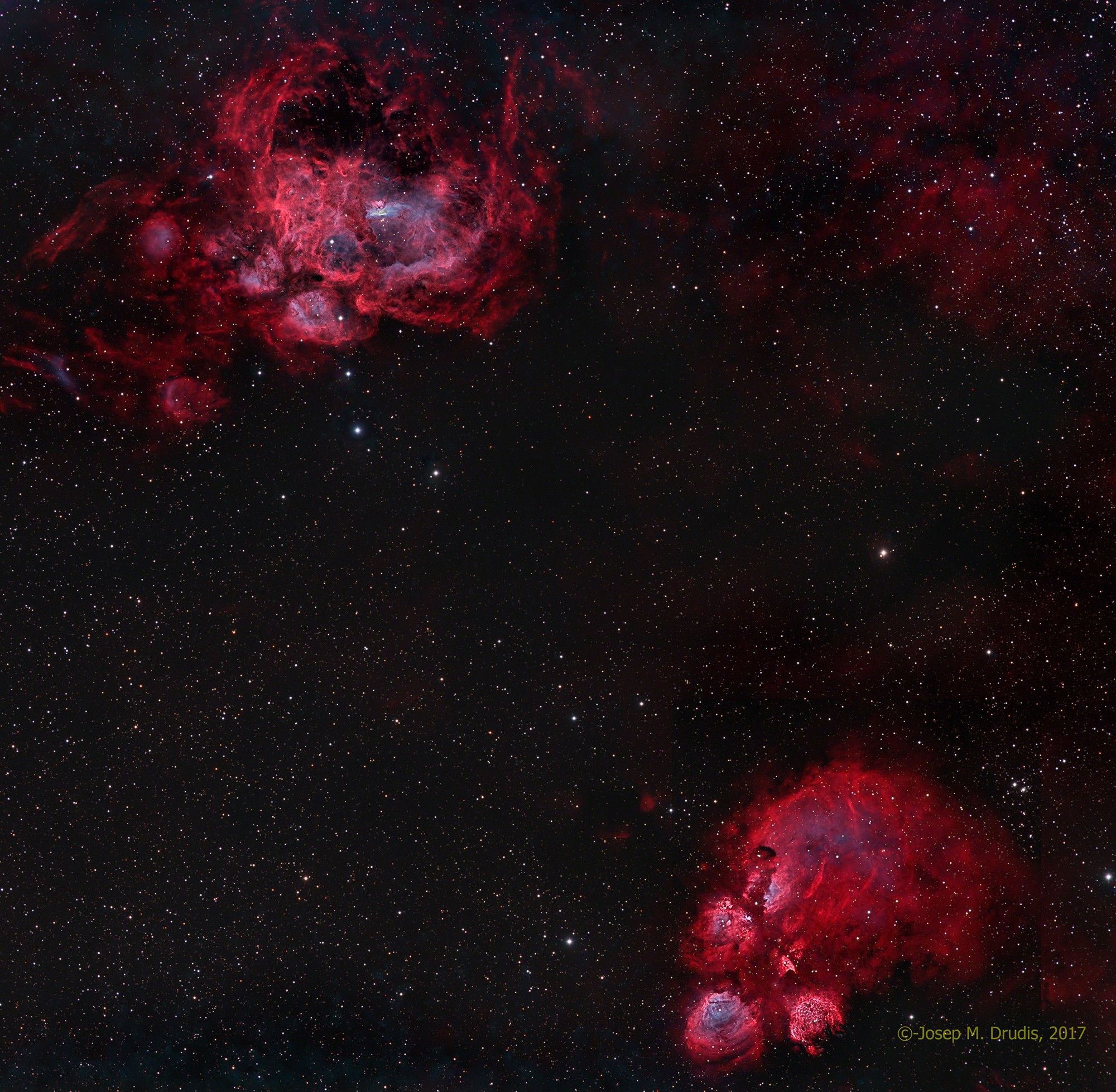
Click here for full resolution image
This wide field shows two real beauties that seem to turn their backs to avoid each other’s sight…
Located 2 degrees apart, these emission nebulae, NGC 6357 (upper left) and NGC 6334 (lower right), are the sites of a high rate of star birth. In both cases, stars are being born with a higher frequency than in other similar regions. There is a difference, though, NGC 6357 is forming massive and very conspicuous stars, while NGC 6334’s new stars are concealed behind a dust cloud that can only be avoided when imaging with infrared cameras.
For this wide field image, higher resolution images of NGC 6357 and NGC 6334 have been blended to enhance its crispness. These images, taken with a CDK 20″ f/6.8 can be seen in this web site: NGC 6357 and NGC 6334. The image has been taken in narrowband and processed to natural color.
Additional Information
Object
Name(s): NGC 6357 and NGC 6334
Type: Emission Nebulae
RA: 17h 22m 54s
Dec: -34º 57’ 58”
Constellation: Scorpius
Size (arcmin): 50 x 40 (NGC 6357) and 40 x 30 (NGC 6334)
Magnitude: +10.0 (both)
Distance: 8,000 ly (NGC 6357) and 5,500 ly (NGC 6334)
Image
Date: 2017-08-25 thru 2017-08-25
Location: iTelescope.net, SSO near Coonabarabran, NSW Australia
Size (arcmin): 3×3 degrees
Telescope: Takahashi TOA 130 f/5.7 and Planewave CDK 20” f/6.8 (High Resolution)
Camera: SBIG STX16803 (4096x4096pix)
Guiding: Astrodon MonsterMOAG off-axis guider
Total exposure: 44 hours (Wide field: 12.5 hours; NGC 6334: 20h; NGC 6357: 11.5h)
Processing: CCDStack, Registar, Photoshop CC 2018